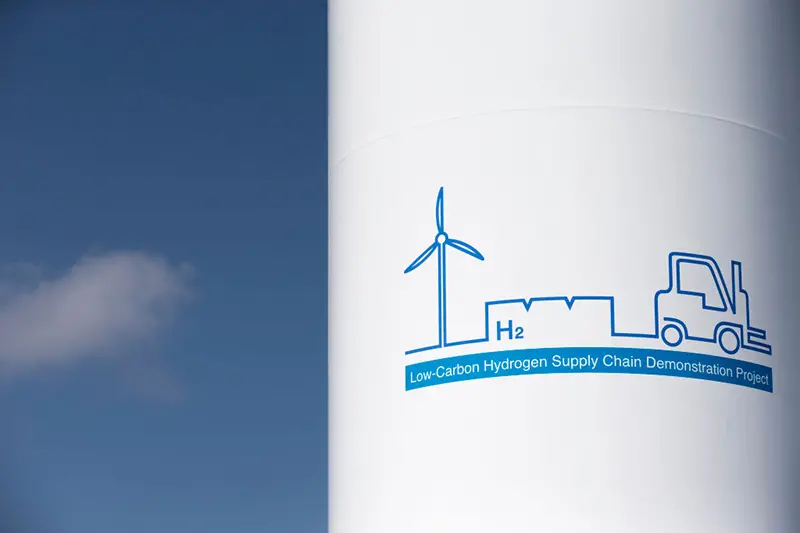PHOTO
Hydrogen is often touted as the future of green energy, but comes with many challenges.
At the recently concluded COP26 climate change summit in Glasgow, many “novel” ideas were bandied around and paraded as the optimum solution in the fight against global warming. Among these was a shift to a hydrogen economy.
Hydrogen is one of the most abundantly available elements in the universe and, for almost a century, efforts have been made to tap this obvious energy source in order to power everything from homes and factories to cars, ships and even aircraft.
While the most advanced and perhaps most prevalent use of hydrogen is in cryogenic rockets that are used to power satellite launch vehicles, the use of the gas closer to earth has been tricky and far from salutary, nothing like the revolutionary role that many have predicted.
Today, hydrogen is used mainly in industrial processes that require high temperatures. Other than that, there have been efforts to power cars and ships, but these remain mainly on the sidelines, with hydrogen-powered vehicles or vessels pushed into a small niche.
Yet, there are enough supporters of the gas in and outside the lab who are keen to thrust a hydrogen economy on the world, with predictions that its use could cut greenhouse gas emissions globally by up to 10 percent by 2050.
However, even the most ardent advocates must realize that hydrogen has a long way to go before it can begin to replace existing alternatives. There are several inherent problems with hydrogen. First and foremost is its availability. Unlike other energy sources, hydrogen does not exist in a form that can be used to generate energy, but has to be manufactured, most commonly from coal or other fossil fuels. This leads to an immense amount of carbon and methane emissions and, hence, is counterproductive. Currently 90 million tons of hydrogen is produced worldwide each year, resulting in about 800 million tons of carbon emissions.
To counter the carbon emissions produced during manufacturing, some have turned to technologies that permit carbon capture and storage. However, this adds to the cost. Ultimately, what needs to be studied is whether this approach can be applied globally, and at what cost, should hydrogen go on to become the backbone of our energy systems in the way fossil fuels are today.
Other methods of hydrogen production avoid heavy carbon emissions but produce smaller quantities and are highly expensive, thus limiting its broader application. These costs have come down marginally after decades of research, but the problems with the “miracle gas” do not end there.
Another major issue is transportation. Hydrogen is one of the least dense materials in the universe and requires large volumes for storage. Even though it has a high calorific value, producing a lot of heat per unit of the gas burnt, its low density makes it nearly impossible to use in its gaseous form and so most often it is liquified. But even then it is not compact, making it a challenge to use it for powering vehicles, ships or aircraft. Aircraft manufacturer Boeing estimates that if it were to use liquid hydrogen to power a 747 jumbo jet, the fuel storage would occupy all of the passenger space as well as the cargo hold. Moreover, to liquify hydrogen, it needs to be chilled to extremely low temperatures, up to minus 253 C, which again comes with its own complications and costs.
Another substantial challenge is that hydrogen is highly corrosive, and can attack and seriously damage storage containers and pipes. The gas is also highly inflammable, and is widely perceived as extremely volatile and dangerous, which also limits its use. Yes, there are companies working to find a solution to the problems and to make hydrogen usable and viable for energy production and transportation on a large scale. But that is still work in progress and the results are far from certain.
However, the fundamental flaw with hydrogen is the energy-intensive nature of its manufacture. Should the world be investing billions in a technology that has so many problems and to which solutions, even if found, are expensive and not necessarily cost-effective? Or should we be focusing on cutting our energy needs by making equipment more energy efficient, and overcoming challenges in solar and wind energy? That is the multibillion-dollar question facing world leaders today.
- Ranvir S. Nayar is managing editor of Media India Group.
Copyright: Arab News © 2021 All rights reserved. Provided by SyndiGate Media Inc. (Syndigate.info).












